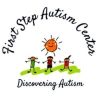Introduction: Autism Spectrum Disorder (ASD) is a complex neurodevelopmental condition that manifests in a variety of ways, making each individual’s experience unique. Understanding the symptoms of autism is crucial for early diagnosis and intervention. In this blog post, we will explore the diverse range of symptoms associated with autism to help you recognize and appreciate the spectrum of experiences within the autism community. Autism Spectrum Symptoms.

Social Communication Challenges:
- Difficulty with Social Interactions: Many individuals with autism struggle with understanding social cues, making eye contact, and engaging in reciprocal conversations.
- Limited Use of Nonverbal Communication: Some may have difficulty using gestures, facial expressions, and body language to express themselves or understand others.
- Difficulty in Developing and Maintaining Friendships: Social difficulties often extend to forming and maintaining friendships, which can be challenging for those with autism.
Repetitive Behaviors and Sensory Sensitivities:
- Repetitive Movements or Speech: Individuals with autism may engage in repetitive behaviors like hand-flapping, rocking, or repeating words or phrases.
- Sensory Sensitivities: Many individuals with autism have heightened or diminished sensitivity to sensory stimuli, such as light, sound, taste, or touch.
Communication Differences:
- Delayed Speech and Language Development: Some children with autism may have a delay in their spoken language or may not speak at all.
- Echolalia: Echolalia, or the repetition of words or phrases heard from others, is common in some individuals with autism.
- Literal Understanding: Individuals with autism may have difficulty with abstract language and humor, often interpreting language literally.
Special Interests and Routines:
- Intense Focus: Many individuals with autism have intense interests or hobbies that they focus on with great passion and dedication.
- Rigid Routines: A preference for sameness and adherence to strict routines is common among those with autism.
Behavioral Challenges:
- Challenging Behaviors: Some individuals with autism may exhibit challenging behaviors, which can include meltdowns, aggression, or self-injury.
- Difficulty with Transitions: Changes in routine or unexpected transitions can be particularly challenging for individuals with autism.
Sensory-Seeking Behaviors:
- Seeking Sensory Input: Some individuals with autism may actively seek sensory input, such as spinning objects or flapping hands.
Conclusion: Autism is a diverse and multifaceted spectrum, and the symptoms can vary widely from one person to another. Recognizing and understanding these symptoms is essential for early diagnosis and intervention. However, it’s equally important to remember that each person with autism is unique, with their strengths, challenges, and abilities.
By fostering understanding, empathy, and acceptance, we can create a more inclusive society where individuals with autism are valued for who they are. If you want to learn more about autism or need resources and support, visit our website at www.fsautismcen.org.

